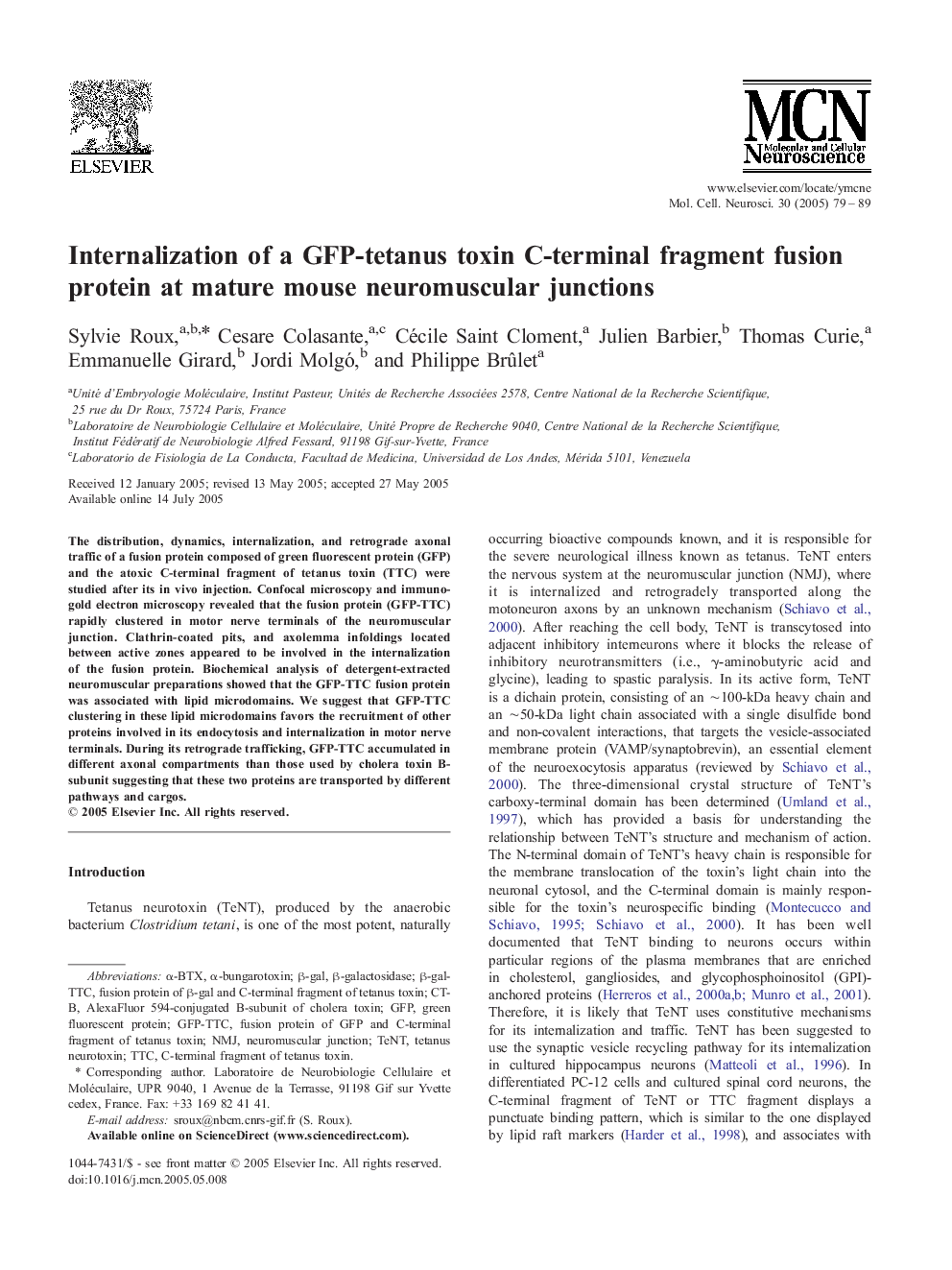| Article ID | Journal | Published Year | Pages | File Type |
|---|---|---|---|---|
| 10956773 | Molecular and Cellular Neuroscience | 2005 | 11 Pages |
Abstract
The distribution, dynamics, internalization, and retrograde axonal traffic of a fusion protein composed of green fluorescent protein (GFP) and the atoxic C-terminal fragment of tetanus toxin (TTC) were studied after its in vivo injection. Confocal microscopy and immunogold electron microscopy revealed that the fusion protein (GFP-TTC) rapidly clustered in motor nerve terminals of the neuromuscular junction. Clathrin-coated pits, and axolemma infoldings located between active zones appeared to be involved in the internalization of the fusion protein. Biochemical analysis of detergent-extracted neuromuscular preparations showed that the GFP-TTC fusion protein was associated with lipid microdomains. We suggest that GFP-TTC clustering in these lipid microdomains favors the recruitment of other proteins involved in its endocytosis and internalization in motor nerve terminals. During its retrograde trafficking, GFP-TTC accumulated in different axonal compartments than those used by cholera toxin B-subunit suggesting that these two proteins are transported by different pathways and cargos.
Keywords
Related Topics
Life Sciences
Biochemistry, Genetics and Molecular Biology
Cell Biology
Authors
Sylvie Roux, Cesare Colasante, Cécile Saint Cloment, Julien Barbier, Thomas Curie, Emmanuelle Girard, Jordi Molgó, Philippe Brûlet,
